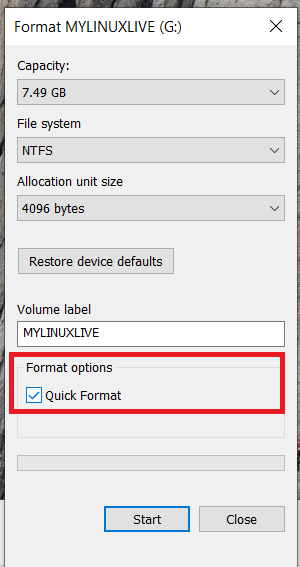
Confirm by clicking OK.īecause you enabled the Quick Format option, formatting the drive with the new file system doesn’t take long. Tick the Quick Format checkbox, type whatever name you want for your flash drive in the Volume Label textbox, and click Start. Click the Allocation Unit Size drop-down list and select the default option, which is 4096 bytes. In the Format window, click the File System drop-down list and select NTFS. With the backup secured, open Windows Explorer, right-click on the flash drive and select Format… in the context menu. But first, make a backup of your existing flash drive files you can transfer the files back to the flash drive after reformatting. That is, unless you reformat the drive and switch to a newer file system.Ĭhanging a flash drive’s file system is easy via a format. Even a 64GB flash drive that has more than enough free space can’t help. That means you can forget about copying DVD and Blu-ray images and large file installers. The maximum size for any file that you can fit inside a FAT32 flash drive (or any other drive for that matter) is 4 GB. FAT32 works just fine in most occasions (which is why it still is widely used in flash drives even to this day), but it’s not designed to handle files with large sizes.


A file system essentially dictates how a computer should handle data storage and retrieval in a storage device. When you encounter such an error, the most probable cause is that your USB flash drive uses the outdated FAT32 file system. On the other hand, you can copy smaller files without a hitch. You try to put files into the flash drive, but you get an error message instead: File Too Large for the destination file system. You have a high-capacity USB flash drive plugged into your computer.


 0 kommentar(er)
0 kommentar(er)
